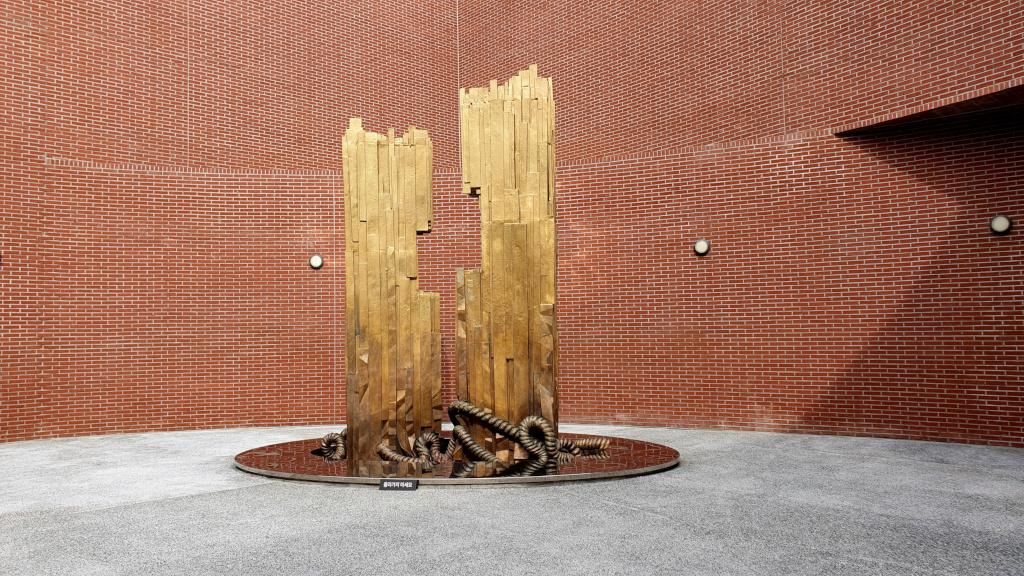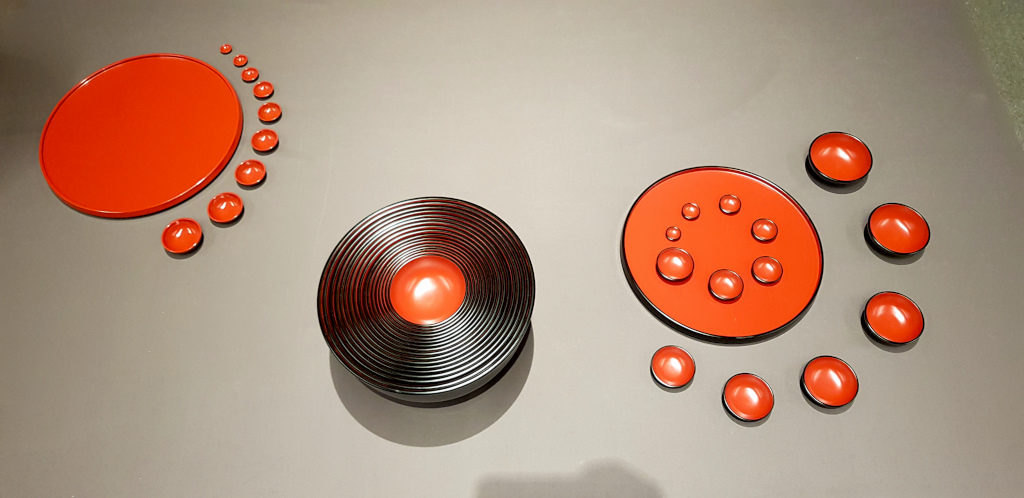A building with an impressive design and brilliant use of space that makes the art on display many times more meaningful. You can see it for yourself at Seosomun Shrine History Museum in Seoul, South Korea.
Seosomun Shrine History Museum (서소문성지 역사박물관) is one of the more impressive museums I have visited because the building and the art complement each other so well. This museum only opened its doors in 2019 and is not well-known, but I assume it will be soon.
The museum is located at the Seosomun Historical Park. From Seoul Train Station or City Hall, it is only a twenty minutes’ walk to the park and museum. You can easily combine a visit to this museum with a visit to Namdaemun or Deoksugung Palace in Seoul.
Seosomun Historical Park

The original Seosomun Park has been renovated to become what is now a very modern park with sculptures and memorials. The Memorial Tower commemorates the martyrs who were executed during the Catholic persecutions. You can also find the sculpture called ‘Homeless Jesus 2013’ that looks very real from a distance.
The use of the landscape and plants make the park into a peaceful place that is good for a quiet walk alone or with a friend. There is something to see in every corner and along every small path.
Seosomun Shrine History Museum (서소문성지 역사박물관)

Underneath the park, you can visit Seosomun Museum: an exhibition space annex shrine, but even more than that it is a beautiful structure with interesting exhibitions.
The entrance of the museum is a few floors below ground level. An elevator can take you there but the best views are from walking down the declining slope that leads you to the golden sculpture in front of the entrance. While the open area in front of the entrance is large and welcomes the light of the sun (if the weather is good), the hallway behind the entrance looks constricted and dark.

This marks the transition from the light-spirited walk in the park to a more serious spiritual place. Once inside you can’t help but notice the high ceiling and brilliant use of materials that make the room feel both spacious and intimate.
The sculptures and artworks are spread around the room and each of them tells a unique story. They tell you more about the history of Korea and humanity. Some of the works on display are on the floor you are at, but through the windows and open spaces, you can also see other works from a very different perspective from when you see them later.
The in-between floor is used for temporary exhibitions. From 1 October 2019 until 29 December 2019 you could see the temporary exhibition Otchil and Korean Mother-of-pearl: Bridging a Thousand Years.

From the floor with the temporary exhibition, you have a good high-level view of the ‘cube’ that marks the entrance of the Consolation Hall.
You can take the central stairs to go to a lower level or take the declining slope towards the Memorial Chapel and Consolation Hall built in the middle of the museum. All at once you enter a place of meditation. The ceiling is lower when you pass the threshold to reveal a very spacious Consolation Hall with different lighting. You can take a seat to spend some quiet minutes while admiring the architecture of the building around you.

From the meditation hall, you can see 24 doors that lead to Heaven Square. All at once you’re outside again in a big square courtyard with 44 Martyrs facing you. They’re only made of raw wood, but they have a very human feel to them, these ‘People on Feet’. It doesn’t feel right to stand opposite them and face them, so you will end up walking among them and taking a stand beside them.
Next to the courtyard, there is an almost hidden door that leads to an illuminated (with natural light) hallway with stones. When you walk up the slope you yourself become part of the exhibition as the light plays with your shadow.


The lowest floor offers another spectacular sight: the ceiling arches. While you look at the books and papers (religious and historical documents) on display the ceiling demands your attention.
What’s so impressive about this whole museum is that every room is very different and optimized for its use. The art and papers on display on this level fit the ‘crypt’ feeling the ceiling gives to the room. When I walk between the men with bowed heads down I feel like contemplating as well and when I look at the faces on the wall I almost get sentimental. The height of the ceiling in the alcoves and the use of natural or artificial light intensifies the meaning of the artworks.
This was also the case in the Consolation Hall, with the lowered ceiling obscuring your vision of what is going on inside and the open sky above the People on Feet in the courtyard allowing you to see daylight.



How to get to Seosomun Shrine History Museum
You can walk to Seosomun Shrine History Museum in twenty minutes from City Hall or Seoul Train Station. There are many bus stops nearby that can take you to your next destination after your visit.
Location: 5 Chilpae-ro, Jungnim-dong, Jung-gu, Seoul, South Korea
Opening hours and tickets
Tuesday – Sunday: 9:30 – 17:30
Free admission.
Pin it for later







